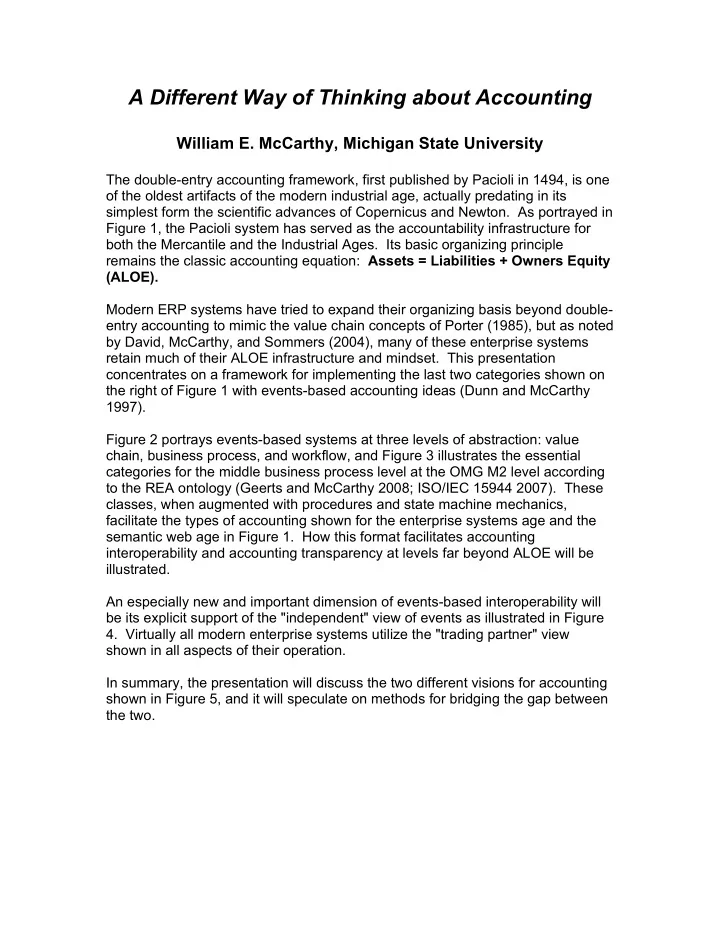

A Different Way of Thinking about Accounting William E. McCarthy, Michigan State University The double-entry accounting framework, first published by Pacioli in 1494, is one of the oldest artifacts of the modern industrial age, actually predating in its simplest form the scientific advances of Copernicus and Newton. As portrayed in Figure 1, the Pacioli system has served as the accountability infrastructure for both the Mercantile and the Industrial Ages. Its basic organizing principle remains the classic accounting equation: Assets = Liabilities + Owners Equity (ALOE). Modern ERP systems have tried to expand their organizing basis beyond double- entry accounting to mimic the value chain concepts of Porter (1985), but as noted by David, McCarthy, and Sommers (2004), many of these enterprise systems retain much of their ALOE infrastructure and mindset. This presentation concentrates on a framework for implementing the last two categories shown on the right of Figure 1 with events-based accounting ideas (Dunn and McCarthy 1997). Figure 2 portrays events-based systems at three levels of abstraction: value chain, business process, and workflow, and Figure 3 illustrates the essential categories for the middle business process level at the OMG M2 level according to the REA ontology (Geerts and McCarthy 2008; ISO/IEC 15944 2007). These classes, when augmented with procedures and state machine mechanics, facilitate the types of accounting shown for the enterprise systems age and the semantic web age in Figure 1. How this format facilitates accounting interoperability and accounting transparency at levels far beyond ALOE will be illustrated. An especially new and important dimension of events-based interoperability will be its explicit support of the "independent" view of events as illustrated in Figure 4. Virtually all modern enterprise systems utilize the "trading partner" view shown in all aspects of their operation. In summary, the presentation will discuss the two different visions for accounting shown in Figure 5, and it will speculate on methods for bridging the gap between the two.
Figure 2 – Three-levels of events-based value tracking
Figure 3 – REA ontological categories for the business process level
Recommend
More recommend